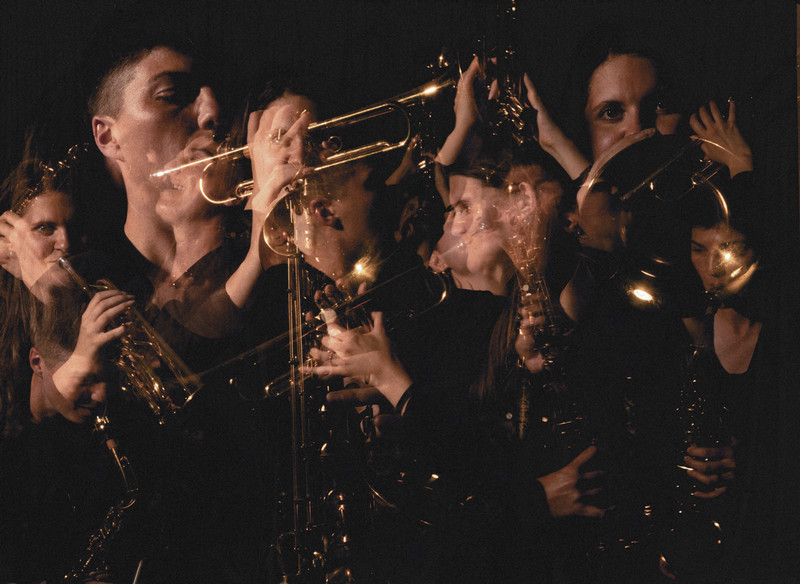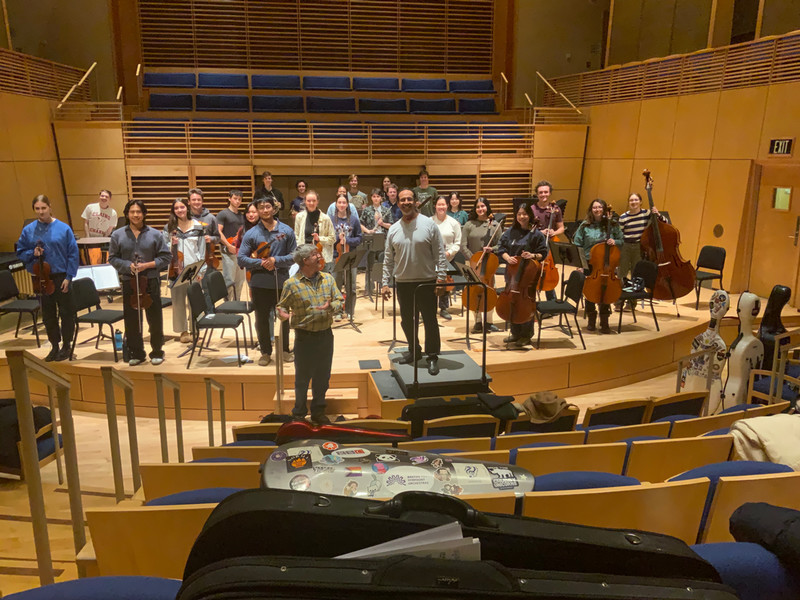Bowdoin Electronic Music Ensemble Lures Those with a Love of the Experimental
By Lily Echeverria ’26“This is your baby now.”
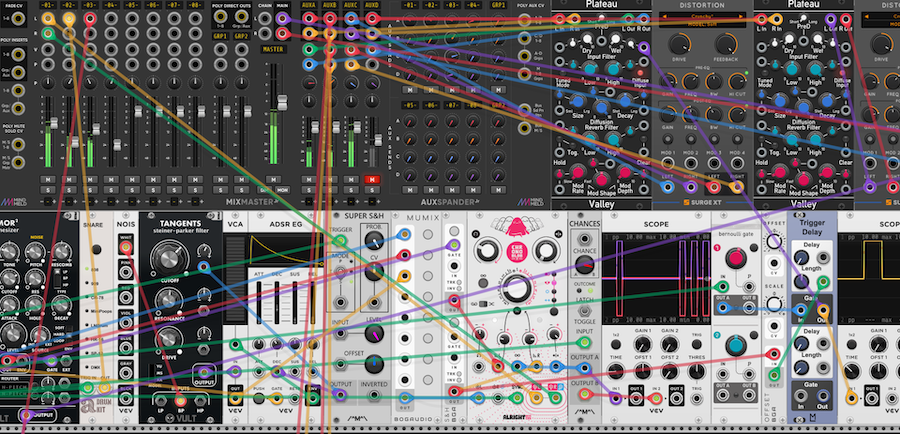
Senior Lecturer in Music Frank Mauceri imparted that message to Sam Kyzivat ’18 before he went on sabbatical for the 2023-24 academic year, leaving Kyzivat in charge of the College’s Electronic Music Ensemble.
Kyzivat has been a freelance film composer since graduating from Bowdoin, but was excited about the opportunity to lead the band of electronic musicians.
“I write music for short documentary films, and naturally my interests kind of gravitated toward synthesizers as I got deeper into film scoring,” he said. “Then the pandemic hit, and my obsession with modular synth exploded.”
Kyzivat is also the operations manager for the Portland Chamber Music Festival, which allows him to also explore classical music.
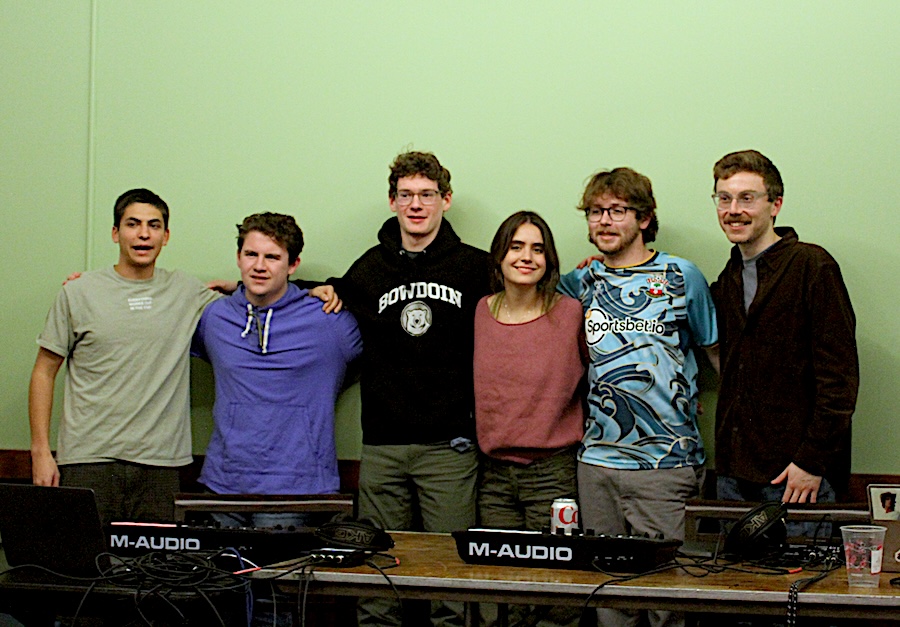
“I get exposed to so much classical music, and also contemporary classical music by living composers. I really love that stuff, as much as I really love electronic music,” he said. “There is a lot of overlap, especially with contemporary composers who are incorporating acoustic and electronic music together.”
This fall, with Kyzivat leading, the Electronic Music Ensemble (EME) included five students—Luke Vazdauskas ’27, Kiran Cremer ’27, Ava Liversidge ’26, Oliver Clachko ’26, and Marc Rosenthal ’25. Kyzivat said he enjoys how the group has no barriers to entry, allowing anyone to begin learning the art form.
“You don’t need musical theory, training, expertise, or knowledge,” he said. “You don’t need to have a certain background—but you have to be musical and be able to listen and use your ears, and be willing to be experimental and try new things.”
Liversidge has been a member of EME since her arrival at Bowdoin. “I love how democratizing software-generated music is,” she said. “Where other genres require expensive gear and sometimes formal lessons, everything the Electronic Music Ensemble produces comes straight from our Bowdoin-provided laptops.”
The possibilities are endless, and all from the screen of a MacBook. The ensemble uses a software called VCV Rack, a free modular synthesizer for Mac and Windows.
Rosenthal has also been part of the group since he was a first-year student. He said he's enjoyed learning the building blocks of the software, which he describes as “universally applicable” and adaptive. “It’s just very generative, which I think is really kind of fun,” he said. “It’s hard to make the same thing twice.”
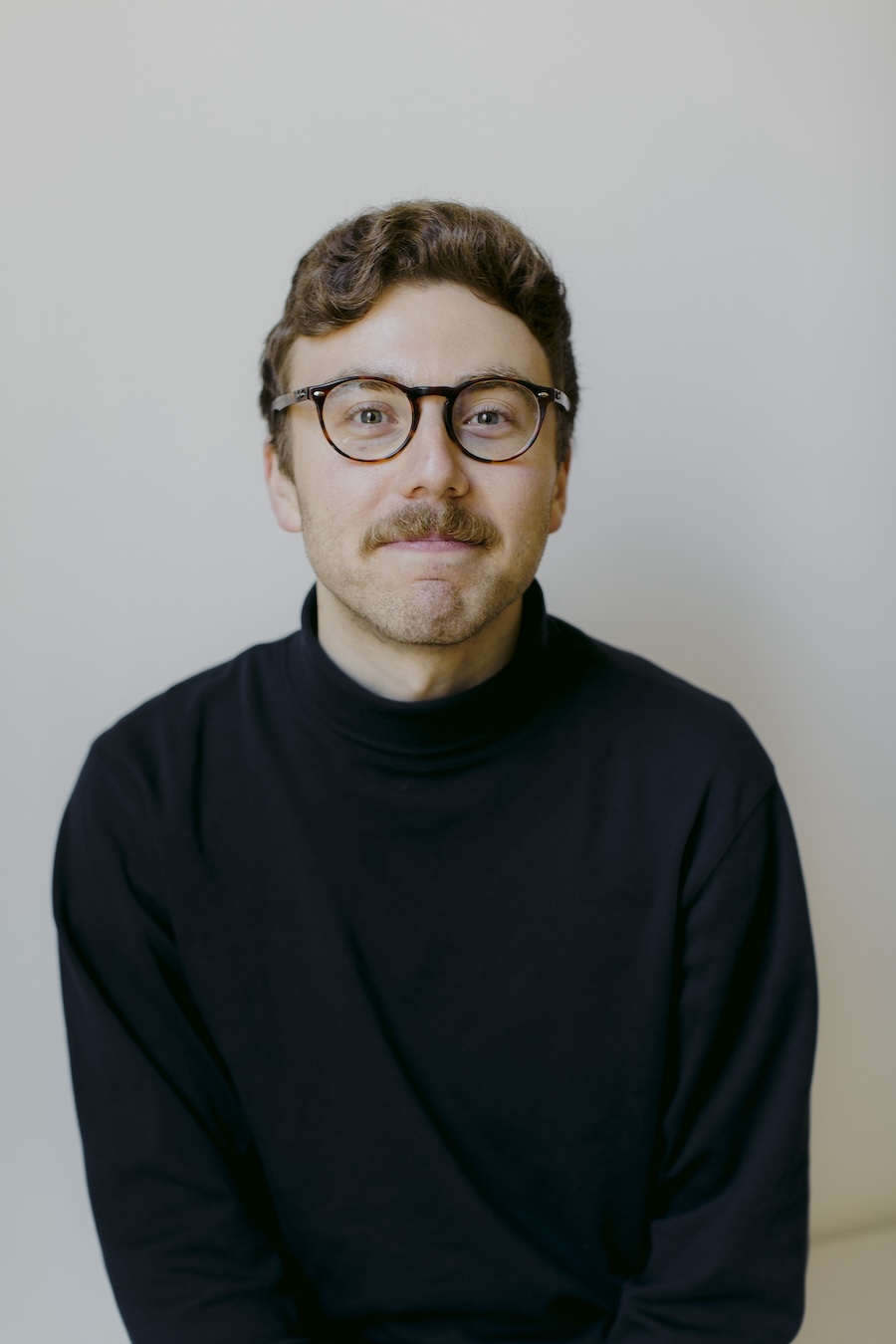
Kyzivat led twelve rehearsals before the group’s culminating performance on November 28. Audience members were greeted by five students sitting at a long table on the stage of Jack Magee’s Pub and Grill. Wires, computers, and soundboards covered flat surfaces all around. Each ensemble member wore large headphones that they periodically took on and off.
Kyzivat said he was impressed with the ensemble’s work, particularly their ability to improvise collectively during the show.
“I was really pleased with how they did. It sounded like they were all listening really closely,” he said. “I was at the mixing board, and I could see not everyone’s channel strip was green at the same time, which meant they were exercising restraint and really listening.”
The power of silence in electronic music is frequently overlooked, especially with the medium becoming synonymous with EDM or dance music in the public eye. The genre goes far beyond that, making room for noise and a lack thereof that expands past what one might hear at a club or a rave.
“Something I tried to impress upon them when we were prepping was making room for silence. It can very quickly become cacophony, which isn’t a bad thing, and it can definitely go there,” he said. “But I think cacophony for an entire performance isn’t as powerful as cacophony with moments of breaking down and quiet.”
EME's final concert of improvised music in Jack Magee's Pub.
Liversidge has taken note of the importance of those quiet breaks throughout her semesters in the ensemble.
“Incorporating silence into any musical project is critical to a mindful creative process. Without the moment of reflection and, sometimes, reprieve that silence offers, there can be no meaningful appreciation of noise,” she said.
“In all music-making, music-listening, and performance practices, silence encourages a rare thoughtfulness amidst the all-too-noisy world we live in. EME did its best to play with the dynamics between silence and sound throughout the set,” she added.
Rosenthal acknowledged how special it has been to have a space on campus to exercise his creativity. “I feel like when I go in there and when I leave, it’s a really nice feeling to have done something completely unrelated to my homework, or even clubs,” he said. “It just feels like it’s in another realm.”
Liversidge had a similar feeling about EME as she was searching for activities at Bowdoin. “I went looking for a musical experience so vastly different from the world of classical piano in which I had been raised. Electronic music, which employs a musical lexicon unrelated to any music I had previously beem acquainted with, was the answer to this quest,” she said.
Electronic Music Ensemble will continue next semester under Kyzivat’s guidance, but the fall semester’s group occupied a special niche for him.
“I think this group, they all brought really unique and different skills and backgrounds to the table...They were all very eager to learn, and had really cool ideas,” he said. “I was always amazed when they would show me their patches and what they were working on. I was really, really happy with the five of them.”

